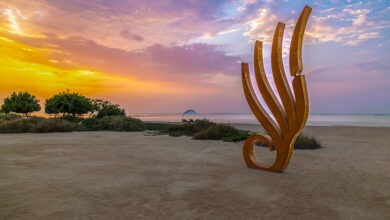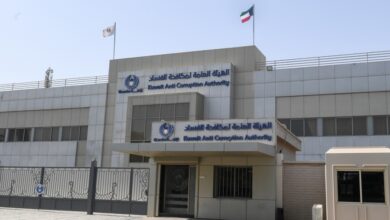Taste of heritage: Why salted fish still anchors Gulf identity
“Salted fish in Kuwait is far more than a preserved staple; it is a bridge between necessity and delicacy, memory and modernity. What once sustained pearl divers and seafarers through months at sea has today become a beloved ingredient on family tables, celebrated both for its distinct flavor and its cultural weight. It embodies resilience in the face of scarcity, the ingenuity of preservation before refrigeration, and the pride of a people whose identity has always been shaped by the meeting of desert and sea. To taste maleh is to taste heritage itself — a humble food elevated into a timeless symbol of endurance, community, and belonging.”

The Times Kuwait Report
Salted fish, known locally as mafis or maleh in different Gulf dialects, holds a deep cultural and historical significance in the Gulf Cooperation Council (GCC) countries, especially Kuwait. For centuries, this simple yet vital method of preserving fish was a cornerstone of survival, trade, and identity in a region where the desert meets the sea.
Geography of the six-nation Gulf Cooperation Council (GCC) states has shaped the way of life of its people for centuries. With an arid climate, large tracts of desert, and limited agricultural resources, the waters lapping the shores of GCC nations provided sustenance, both as food and as a means of livelihood. Fishing was not just an economic activity but a way of life, and preserving fish was essential for survival during lean seasons and long journeys.
Unlike now, ‘refrigeration’ was unheard of in this part of the world earlier; salt was the most reliable preservative available, making salted, dried fish one of the earliest and most important food staples. In Kuwait, the tradition of salting and drying fish goes back generations. Before the discovery of oil, the Kuwaiti society depended heavily on pearl diving, seafaring, and fishing. Salted fish was a crucial dietary component, providing protein and nourishment in a land where fresh produce and meats were often scarce.
Many families stored large quantities of dried, salted fish to ensure food security during times when fishing was impossible, such as during storms or the scorching summer heat. The process of salting fish is itself an art form. Fishermen carefully selected the right types of fish, commonly zubaidi, safi, or mead (maiden fish), to preserve. After cleaning, the fish were layered with coarse sea salt, pressed, and left to cure under controlled conditions. This method not only extended the fish’s shelf life but also gave it a distinctive taste that became deeply ingrained in Gulf cuisine.

Beyond its nutritional value, salted fish became a symbol of resilience and resourcefulness. For the Gulf people, it represented an ability to thrive in a harsh environment with limited resources. Even today, many older generations view salted fish with nostalgia, recalling childhood memories of family meals centered around this humble yet flavorful dish.
Salted fish was also tied to regional trade. Before refrigeration, it was one of the few seafood products that could be transported long distances without getting spoiled. Kuwaiti traders carried salted fish across the Arabian Peninsula, exchanging it for rice, dates, and other necessities. It became a commodity linking coastal towns with inland communities, weaving networks of exchange that reinforced economic ties across the GCC.
Economically, salted fish continues to remain a modest but important part of the fisheries sector in Kuwait. Reportedly, Kuwait imports and re-exports thousands of tons of dried and salted fish annually to meet demand, particularly during Ramadan and traditional festivals. Prices vary depending on the type and quality of fish, with premium varieties fetching higher market rates. The sector contributes to supporting local fishermen and small-scale traders who rely on seasonal peaks in consumer demand.
On a regional scale, the GCC salted fish market has also gained traction beyond household consumption. With the rise of heritage food exports, some Kuwaiti traders package salted fish for sale in Gulf supermarkets and even niche markets abroad, targeting Gulf expatriates in Europe and North America. This has transformed a once purely survival-driven food into a product with economic potential, combining cultural preservation with commercial opportunity.
In Kuwaiti cuisine, salted fish remains a cherished ingredient. Traditional dishes such as maleh moshakhal (desalted and cooked salted fish) or marag maleh (a salted fish stew served with rice) continue to be enjoyed in households, especially during Ramadan. These dishes embody more than just taste; they carry stories of endurance, family, and cultural identity.
The use of salt as a preservative was not just practical but ingenious. In the absence of refrigeration, salt’s ability to draw out moisture created an environment hostile to bacteria, ensuring the fish remained edible for months. This allowed Gulf fishermen to maximize their catches, reducing waste and ensuring food availability long after the fishing season ended.
Interestingly, the tradition of salted fish also intersects with social customs. In many Kuwaiti households, salted fish was considered a communal food, shared during gatherings or given as a token of hospitality. Its strong, distinctive aroma and flavor often drew families together around the dining mat, reinforcing bonds and shared heritage.
In modern times, despite the abundance of fresh fish and global cuisines in Kuwait, salted fish retains a special place. Markets still dedicate stalls to this age-old product, as seen in traditional souks where rows of salted fish are displayed in barrels, jars, and packets. Customers, both young and old, frequent these stalls not just for the taste but for a connection to their cultural roots.
Moreover, salted fish represents a sustainable practice. In an era where food preservation is dominated by refrigeration and chemical additives, the natural method of salting remains a testament to eco-friendly and time-tested food processing. It speaks to the Gulf people’s intimate knowledge of their environment and their ability to adapt wisely.
For the GCC, salted fish is more than food—it is a cultural marker. It tells the story of pearl divers who took salted fish as provisions on long voyages, of merchants who traded it across deserts, and of families who relied on it during the hardships of pre-oil life. Its legacy is woven into poetry, folklore, and even seasonal celebrations.
In Kuwait, festivals and heritage exhibitions often highlight the practice of preserving fish by salting as part of the nation’s intangible heritage. Elders share techniques of preparation with younger generations, ensuring that this culinary and cultural tradition is not forgotten amid modernization. The image of salted fish hanging in stalls or packed in buckets is not merely a sight of commerce but a preservation of identity.
As the GCC countries rapidly modernize, traditions like salt-preservation of fish remind their people of where they came from. It is a symbol of continuity—a bridge between past and present. Kuwait, with its deep fishing heritage and strong cultural ties to the sea, continues to honor salted fish not just as a delicacy but as a legacy of endurance, ingenuity, and community.
Ultimately, salted fish remains an enduring reminder that even the simplest foods can carry the richest stories. For the Gulf peoples, and Kuwaitis in particular, it is a taste of history—one that continues to flavor their meals and their sense of belonging.












